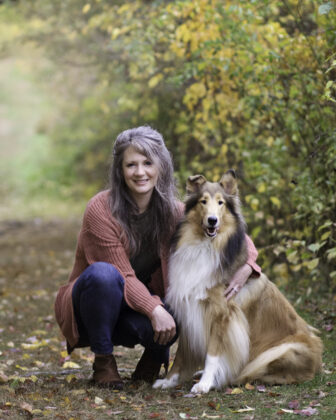Course Details
Maximize your puppy’s confidence and resilience with Control Unleashed and ACE (Animal Centred Care) Free Work. I’ve raised many puppies of my own, but it is my most recent puppy who I raised with a CU and Free Work foundation and the results have been astonishing! She is confident, resilient, easy to train, emotionally healthy, and the best early relationship that I’ve had by the time she’s reached adolescence. Let me share this with you so that you can see the same results - I’ll teach to you all the things that I taught her and more!
Control Unleashed focuses on patterns to build predictability and skills to allow our puppy to communicate how they’re feeling. It’ll provide them with the life skills that are necessary for growing up in our crazy world. I’ll also introduce Free Work (for the very first time for FDSA!) and how you can use this powerful tool to not only enhance your CU skills, but to build an emotionally and physically healthy, stable puppy.
Puppies are my jam. I have been teaching puppy classes since 2012 and have introduced a number of CU and Free Work skills into my curriculum over the years. I have also raised multiple puppies of my own, as well as helped to raise two litters (with plans to raise more!). This class is ideal for the young puppy with a bright future in sports, work, family, or all! Puppies would preferably be 6 months old or younger so that learning can begin with these skills, however any puppy under 1 year old is welcome to take a gold spot. This is also a great class to keep in your library for that future puppy! Please inquire if you’d like to know if this is the right fit.
Trainers are welcome to take this class to build their skills and knowledge for teaching puppy classes and private lessons, Control Unleashed, and ACE Free Work. 6 CEUs are available upon completion of the class.
Teaching Approach:
Kim releases lectures every few days based on the classroom progress. Skill-based lectures will include written text, a tutorial video, step-by-step instructions, and occasionally additional demonstration videos. Concept lectures will be mostly written text with occasional demonstration videos. Because this is a new class, bonus lectures or discussions may be added in addition to what’s listed on the syllabus.
Feedback is unique to each individual student and their needs. The feedback is written and may include timestamps or screenshots to point out specific points in the video. Focus is placed not just on the skill itself, but also the handler’s mechanics and the dog’s physical and emotional comfort level to ensure the most progress can be made. Recommended next steps are often included.
 Instructor: Kim Palermo
Instructor: Kim PalermoKim Palermo CPDT-KA (she/her) is a Certified Control Unleashed Instructor and ACE (Animal Centred Education) Practitioner. She specializes in teaching Control Unleashed and ACE Free Work with private clients, teaches a high volume of in-person CU classes, and incorporates CU into all of her membership-style group pet dog classes for her dog training business, BlueDog, located north of Boston...(Click here for full instructor bio)


